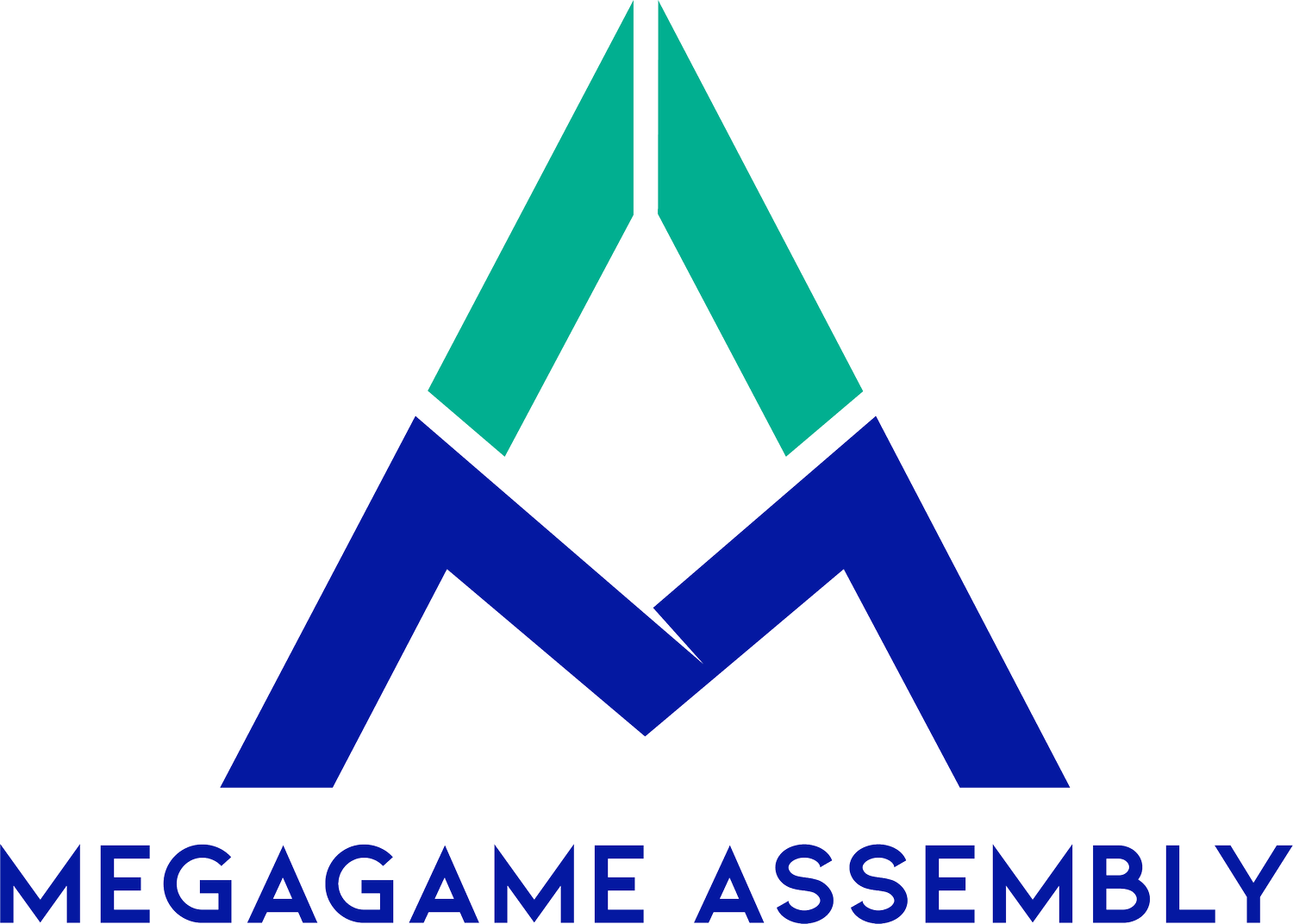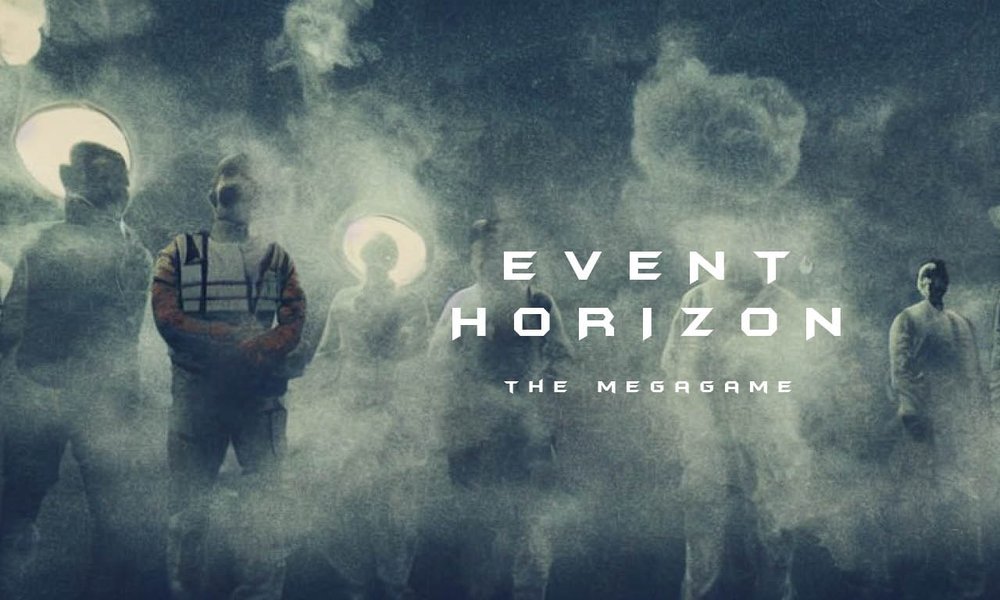Megagame Designer Thoughts: Event Horizon
Event Horizon game art. Photo by: Johan Olofsson
In these articles we have a chat with designers after their games have run, to talk a bit about their experiences, thoughts, and any general pearls of wisdom they may wish to impart. We’ve talked to Johan Olofsson of Gothenburg Megagames about Event Horizon, the sci-fi game of mystery and horror.
Tell us a bit about yourself – how did you get into megagames?
I was dragged along to my first megagame by a friend (the same friend helped do all the mechanics for Event Horizon). I thought I needed to go to this megagame thing, and it was Watch the Skies at a convention. Afterwards I immediately booked a flight for London to go to Watch the Skies in Brighton, two weeks after!
Three weeks after that was Urban Nightmare: State of Chaos (the Wide Area Megagame), then Crisis in Elysium, and I was fully hooked. I wasn’t wholly addicted by the first one, although I thought it was interesting, but by the second one I was a firm megagame fan.
How do you think your most recent run of Event Horizon went?
It went really well! My indicators for this go like this: players enjoyed themselves, the game was fast paced, there was lots of interaction for all players throughout the day, and different tweaks worked really well.
I’ve received lots of messages afterwards saying how good it was, and one of the experienced players said it was the best he’d ever played.
Megagames need drive and enthusiasm from a designer – what excited you about creating Event Horizon?
I think nothing excited me about creating a megagame at first; I was pretty content with playing them, but then Ed McDaniel did an interesting all-out murder mystery. That seemed loose and improvised but still “controlled”, so what if I designed something like that, based off a sci-fi film?
Someone said it didn’t sound like it would be a murder mystery, and then I thought it might have potential to be a megagame. I tested it with people; we had three notepad pages on the floor, and I gave people a loose idea of what they needed to do – it was basically the premise of the film. If they’d just left things alone, they’d all be fine (but that’s dull).
As soon as players started fiddling with something it went wrong, so I thought “why not have that as a design premise” – it started with three blank pages and we saw what happened from there!
Johan chatting to Rob for this article. Photo by: Rob Grayston
Relatedly, what was influential in designing Event Horizon?
Obviously Event Horizon the film. Someone told Alex from Horizon Megagames that it was something I was doing, and he wanted to run it.
I was failing until about three months before the game ran for the first time, but then I showed it to someone and they said “this is awful,” to which I replied “that’s the premise,” and they followed up with “No, MECHANICALLY.” It was designed as a freeform with one Control for 44 players, and that would be hard. At the time I was obsessed with Den of Wolves, letting players handle their own interactions, so that was a driver here – the players being the experts, effectively.
If you don’t board the Event Horizon spaceship, everything will be fine and there will be no weird stuff or traitors – but is that interesting to play? Control won’t push that on people, but nothing is pre-ordained.
At the most recent run, things were escalating to the point of no return, and I was overseeing one section of the ship. I informed the players “we’re shutting the game down now,” and a player who was a psychiatrist asked “can I finish this scene?” I said yes, and she ended the game with “… and so my silhouette starts sprouting tentacles.” She finished her own self-made story arc by becoming a monster! The game allows for it, but it doesn’t happen in the first hour by Control fiat.
The game’s dice-based, with different colours to show different skills, and you get some of these as you explore the Event Horizon, which is a fun mechanic as you get more by interacting more – especially with those mysterious and sanity-melting black dice…
Players have a habit of doing unexpected things – from your last run of the game, did anyone do something you hadn’t considered, and how did that go?
Someone turning into a monster is expected, but perhaps not the psychiatrist. Someone else rammed one spaceship into another, which is fairly standard and expected stuff, although what may have been unexpected was that the UN team had a really good handle on things!
This was the third run of the game, and so far comms ordinarily break down halfway through play, but in this one the UN players were very on the ball. As semi-plumpire (“player umpire” or half-Control/half player) roles, they had some say over other teams, but as soon as these UN players weren’t around things fell apart a bit. Leadership in action in a megagame was great to see.
Event Horizon has run more than once now – what’s changed?
Anything perceived as a “speed bump” has been taken out or adjusted. The most recent was being on board the Event Horizon, where you get three rotations of actions. We’ve removed discussion from this phase so there’s no swapping of items, etc. – no bogged down gameplay time with waiting around! This meant people came to the phase ready to act, which made the game ran smoother, and team time discussions were meaningful as people were strategising.
Event Horizon has a very polished visual appearance with its components and marketing – how important do you think this is, and do you think this has helped the success of the game?
Obviously, all this is true or I wouldn’t go to the effort to do it! We have something strange with megagames here, which is that Event Horizon attracts a lot of non-male players, possibly because of this polished marketing?
Also, the way we talk about non-gendered astronauts – it’s a well-known trope so I think this helps. We have been trying to boost the overall feel, with rules videos lowering the barrier to entry – it’s always a struggle, as narrative marketing is good but “what is the game about?” always comes up; are there teams, what’s the game like, etc.
Halfway through the marketing campaign, we flipped the message on its head and changed things from just HORROR NARRATIVE, to showing the game, people having fun, components, and so on, and this helps explain what’s expected.
Some of this is about what the game involves, not just its theme – what can you expect from the interactions, and why is this game fun? Out of 44 players, we had 10 brand new players. They come knowing they’ll be welcome.
There’s a lot to be said about who is saying what and word of mouth. We have a community Facebook group which is a part of what we do, and it’s real people talking megagame things with a high degree of interaction! You have to sell the hobby as well as the game, which you need to do with consistency – it seems harder to do a one-off, but there’s no context around it, harder to get a feel. It needs to look like something you want to spend your money on!
Some elements don’t need to be that polished, but for megagames it really can help.
Players on board the Event Horizon. Everything’s fine… Photo by: Johan Olofsson
We all have lists of games we’d like to make, and some of these end up actually bearing sweet megagame-flavoured fruit – what are you working on for your next game design?
We’re pulling everything apart for Europa Universalis! Starting in November, Megagame Oslo have polished the last design, which was by a guy from Paradox Interactive. His design was more like a one-page description of the game rather than actual mechanics, and now we want to design it from the ground up as a megagame which accounts for the ways you can interact with the world and players.
“Everything worked great apart from the mechanics” was the playtest judgement from Oslo Megagames’ Odd-Helge Gravalid, so we want to use solid design principals where we make players interact with each other rather than the game board – and then you don’t need control stood at a map, because the players have the map facilities themselves!
If resources and time were no object, what would be your dream megagame to design?
What a good question!
I don’t even know where to start, there’s so much that could be done. I think I’d like to experiment more with physical space, like what can we do that’s around a game – the venue, sights and sounds, make it more for the senses, incorporate more than just boardgame mechanics.
I’m not talking escape rooms, but more rooms, maybe QR codes on top of game components watched by a camera, with people able to see the game state in an app on their phone which they can check – but the theme? No idea!
For anyone looking at designing a megagame, what is your one top tip for them?
Run it multiple times before you run it for the first time. Do the three blank pieces of paper – as soon as you have a mechanic idea, give it a go. Let people be curious about your game, and don’t be afraid if people tackle things in a way you don’t intend. See how you can enhance interaction rather than steer people away from specific ways to interact.
Pushing people out an airlock led to us introducing an airlock mechanic, restraining others in the game was highlighted as a probability so we put it in, and experiences like this led to the development of things like the Emergency Cable (Ed: if you ever get a chance to use it in Event Horizon, please do, it’s both potentially life-saving and hilarious). Show stuff to people and see what comes out of it!
Thanks to Rob for interviewing Johan’s thoughts on about Event Horizon! Have you deigned a megagame and would like to be interviewed by Rob? Let us know and we can make it happen.



